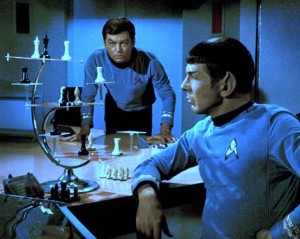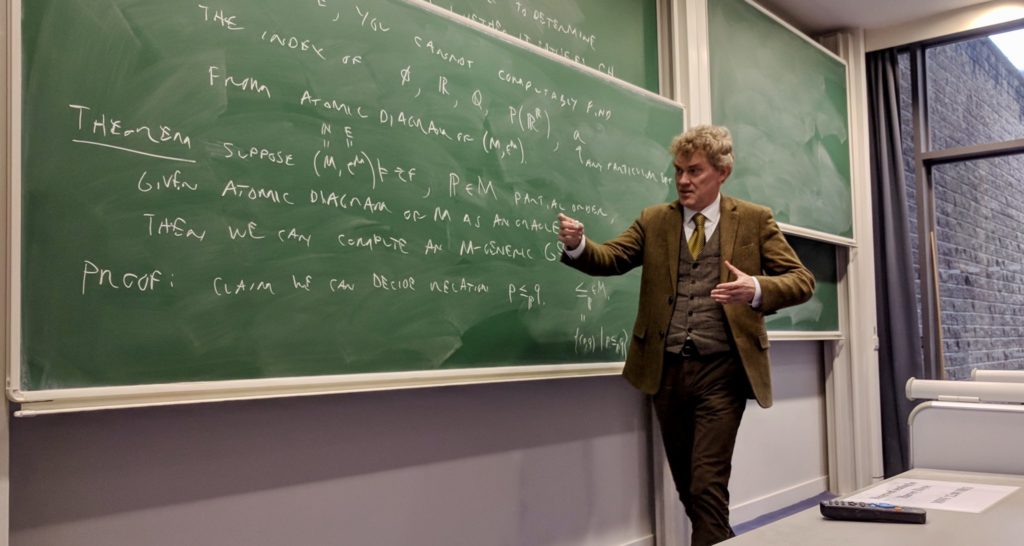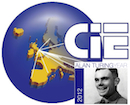I have just taken up a visiting fellow position  at the Isaac Newton Institute for mathematical sciences in Cambridge, UK, where I am participating in the program Syntax and Semantics: the legacy of Alan Turing. I was asked to give a brief introduction to some of my current work, and I chose to speak about infinite chess.
at the Isaac Newton Institute for mathematical sciences in Cambridge, UK, where I am participating in the program Syntax and Semantics: the legacy of Alan Turing. I was asked to give a brief introduction to some of my current work, and I chose to speak about infinite chess.
Infinite chess is chess played on an infinite edgeless chessboard. The familiar chess pieces move about according to their usual chess rules, and each player strives to place the opposing king into checkmate. The mate-in-$n$ problem of infinite chess is the problem of determining whether a designated player can force a win from a given finite position in at most $n$ moves. A naive formulation of this problem leads to assertions of high arithmetic complexity with $2n$ alternating quantifiers—there is a move for white, such that for every black reply, there is a countermove for white, and so on. In such a formulation, the problem does not appear to be decidable; and one cannot expect to search an infinitely branching game tree even to finite depth.
Nevertheless, in joint work with Dan Brumleve and Philipp Schlicht, confirming a conjecture of myself and C. D. A. Evans, we establish that the mate-in-$n$ problem of infinite chess is computably decidable, uniformly in the position and in $n$. Furthermore, there is a computable strategy for optimal play from such mate-in-$n$ positions. The proof proceeds by showing that the mate-in-$n$ problem is expressible in what we call the first-order structure of chess, which we prove (in the relevant fragment) is an automatic structure, whose theory is therefore decidable. Unfortunately, this resolution of the mate-in-n problem does not appear to settle the decidability of the more general winning-position problem, the problem of determining whether a designated player has a winning strategy from a given position, since a position may admit a winning strategy without any bound on the number of moves required. This issue is connected with transfinite game values in infinite  chess, and the exact value of the omega one of chess $\omega_1^{\rm chess}$ is not known. I will also discuss recent joint work with C. D. A. Evans and W. Hugh Woodin showing that the omega one of infinite positions in three-dimensional infinite chess is true $\omega_1$: every countable ordinal is realized as the game value of such a position.
chess, and the exact value of the omega one of chess $\omega_1^{\rm chess}$ is not known. I will also discuss recent joint work with C. D. A. Evans and W. Hugh Woodin showing that the omega one of infinite positions in three-dimensional infinite chess is true $\omega_1$: every countable ordinal is realized as the game value of such a position.
article | slides | streaming video | program of abstracts






